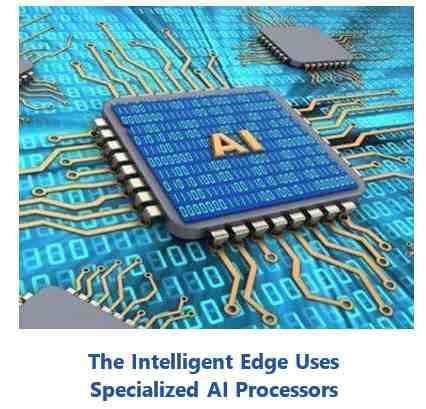

Keywords: Artificial Intelligence, Machine Learning, Automation, Inference Engines, AI Processors, Prescriptive Analytics, Autonomous Systems, Training Algorithms, Cobots, Cognitive AI, ARC Advisory Group.
Today’s Smart Manufacturing environment is predicated on factories that use intelligent, connected production equipment and devices that allow for data-driven decision making to enable efficiency and productivity across the product lifecycle. Initially, manufacturers introduced the use of advanced analytics powered by Artificial Intelligence (AI) and Machine learning (ML) that allowed production systems to progress from condition monitoring to predictive and prescriptive analytics. Moreover, this would create a pathway from connected and intelligent to self-aware machines and production equipment and ultimately lead to autonomous self-healing systems. Moving forward to today’s factories and production lines we see that AI/ML has already become an integral component of Smart Manufacturing overall.
While the adoption of AI is a game changer across many industries, the manufacturing industry is currently one of the top adopters of artificial intelligence. Implementing AI in manufacturing facilities is becoming popular. According to recent ARC research, a significant percentage of manufacturing leaders have indicated that their organizations are at least moderately using some form of AI. Additionally, more than half of the European manufacturers (51 percent) are implementing AI solutions, with Japan (30 percent) and the US (28 percent) following in second and third places.
This popularity is driven by the fact that manufacturing data is a good fit for machine learning (ML). Manufacturing is full of analytical data which is easier for machines to analyze. Hundreds of variables impact the production process, and while these are very hard to analyze for humans, ML models can easily predict the impact of individual variables in such complex situations. Manufacturers are frequently facing different challenges such as unexpected machinery failure or defective product delivery. Leveraging AI and ML, manufacturers can improve operational efficiency, discover optimal production processes, launch new and innovative products, customize product designs, and plan future financial actions to progress on their digital transformation.
ML is being used to determine the optimal production processes in manufacturing. Prescriptive analytics combine Big Data, mathematical statistics, logic, and ML to empirically reveal the origins of the most complex production problems and then suggest decision options to solve them. ML-based production intelligence systems use pattern recognition technology to analyze existing production data for both product and process and identify patterns of what works (best practices) and what does not (risk situations). These patterns are translated into a form of human-readable rules that are then applied to manufacturing operations for best practices. Aerospace and automotive manufacturers have used this method to optimize advanced composite manufacturing processes.
ML, as a subset of AI, uses mathematical probability and large-scale pattern matching to make inferences (learn) through training algorithms. This process mimics human intelligence. ML systems are trained to examine and analyze very large datasets of historical and real-time data based on the production machines and processes and categorize it into classes which will function as training data. A cloud-based data center is where ML training algorithms are developed using specialized servers with high computing resource capabilities. The edge is where ML inferencing is performed using specialized processors with integrated inferencing engines built into the processor.
There is continuing discussion about what exactly constitutes an intelligent edge, and the definition continues to evolve. Some in the edge device industry maintain the edge is between the IoT device and the cloud and define it as a range of smaller vertically dedicated clouds. These “mini” clouds are more energy efficient and reduce the inherent latency of moving massive amounts of data from devices and sensors to large scale data center enterprise clouds. There appears, however, to be a consensus forming that embedded intelligence in the edge devices, powered by next generation processors designed specifically for AI and inference-based machine learning will drive the future of Smart Manufacturing and its implementation.
In the factory production areas, ML is helping to improve and optimize the production process in several ways. These include reducing the occurrence of equipment failures to keep the production rate humming and reducing expensive downtime. ML-based algorithms can access and analyze very large volumes of data from vibration sensors in machines to detect and predict machine anomalies and failures. Moreover, ML can be prescriptive to determine how to best fix and prevent problems. And, ultimately, ML algorithms can orchestrate a complete self-healing autonomous production environment of machines and assembly lines.

ARC Advisory Group clients can view the complete report at ARC Client Portal
If you would like to buy this report or obtain information about how to become a client, please Contact Us
Learn more about ARC In-depth Research at Market Analysis
Learn more about ARC Strategic Services at Advisory Services for Industry Leaders
Keywords: Artificial Intelligence, Machine Learning, Automation, Inference Engines, AI Processors, Prescriptive Analytics, Autonomous Systems, Training Algorithms, Cobots, Cognitive AI, ARC Advisory Group.

